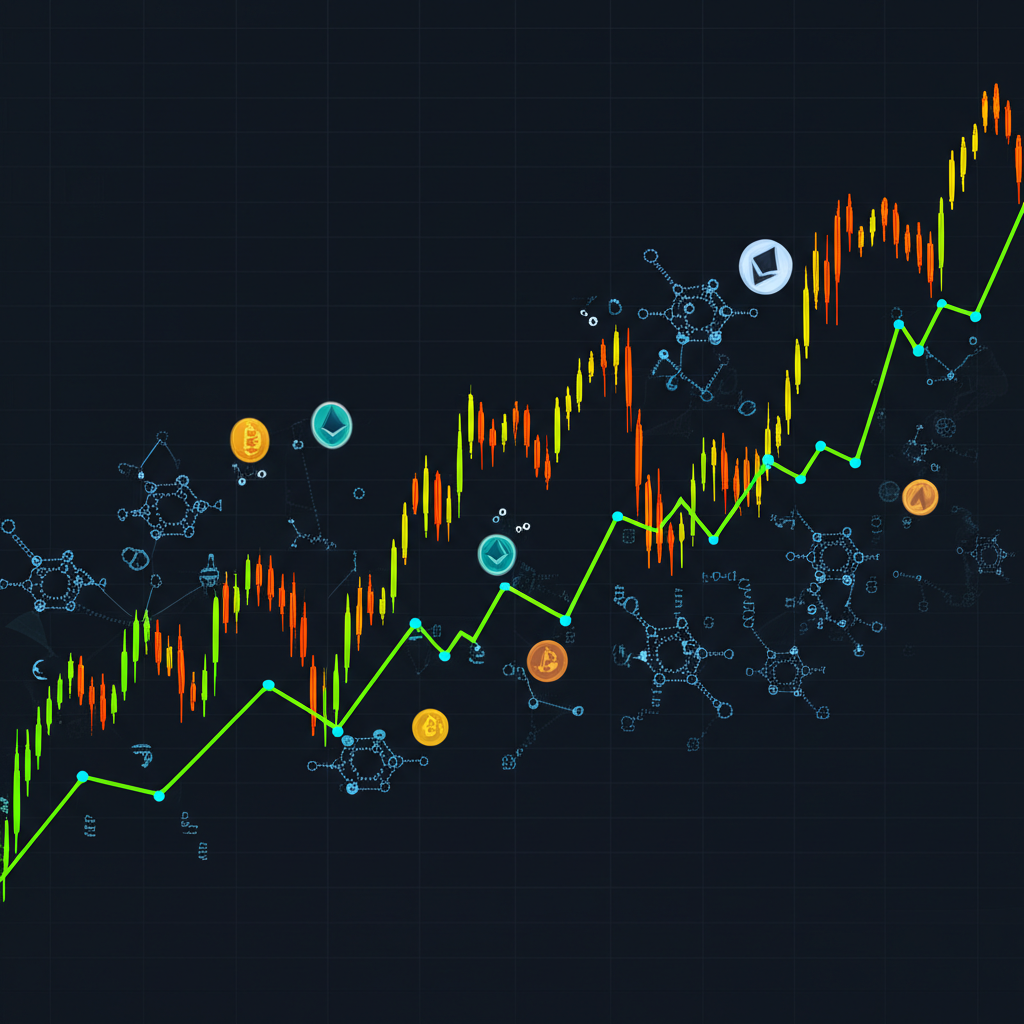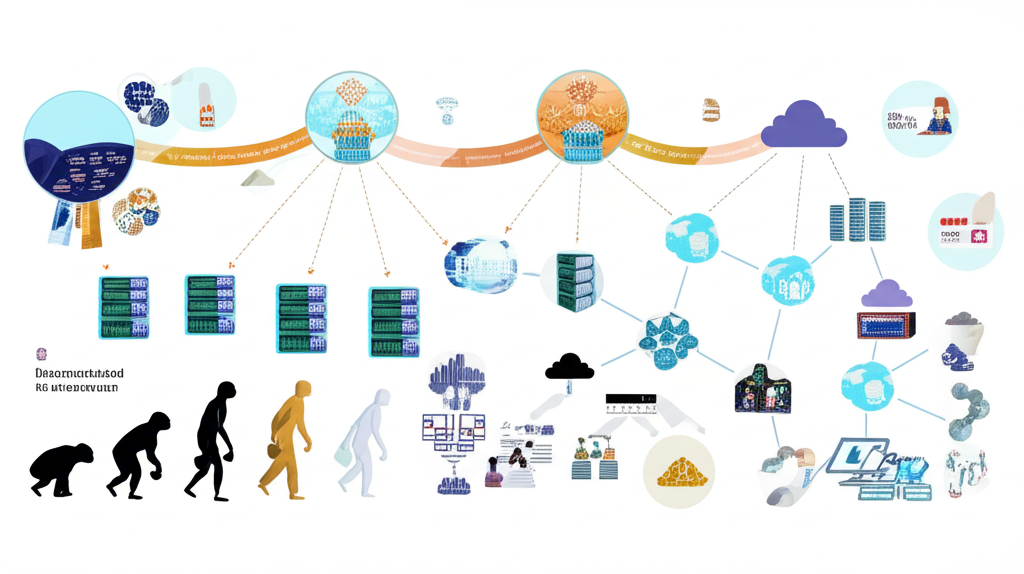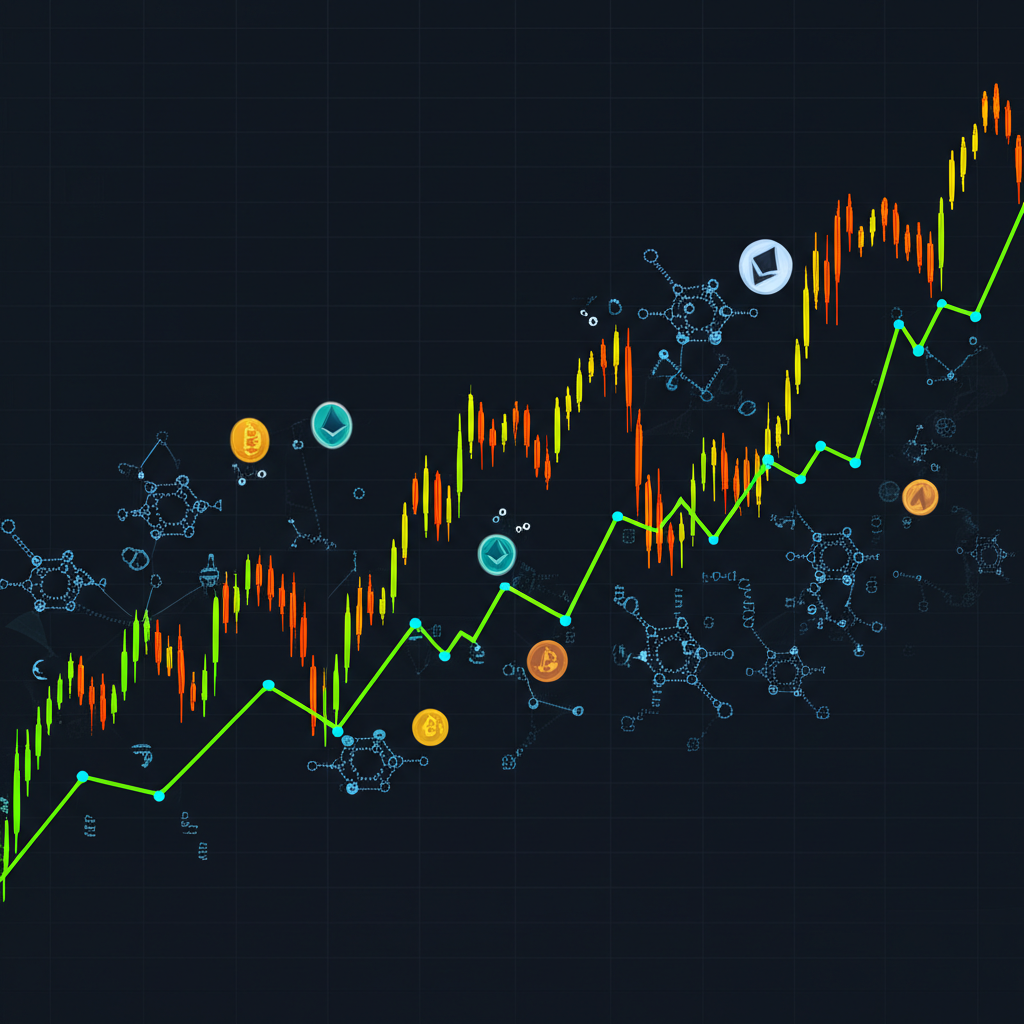Introduction: What Exactly Are “NFT Stocks”?

The explosive rise of Non-Fungible Tokens (NFTs) has reshaped how we think about digital ownership, but for many investors, diving straight into the world of digital collectibles can feel overwhelming. Enter NFT stocks—a more accessible gateway for those looking to tap into this technological shift without navigating decentralized wallets or minting processes. These aren’t shares in individual NFTs or cryptocurrency tokens. Instead, NFT stocks refer to equity in publicly listed companies that play a pivotal role in the NFT ecosystem. Whether they’re building the platforms where NFTs are traded, developing the underlying blockchain infrastructure, or creating virtual worlds powered by digital assets, these firms offer investors a way to gain exposure through traditional financial markets. This distinction is critical: rather than betting on the speculative value of a single digital artwork, investors are backing established businesses with tangible operations, balance sheets, and growth strategies tied to the broader adoption of digital ownership. As the NFT market has ballooned to billions in annual sales, interest in the companies enabling this transformation has surged, making NFT stocks a compelling frontier for forward-thinking portfolios.
Why Invest in NFT Stocks? Opportunities and Market Drivers

Choosing NFT stocks over direct NFT purchases offers a strategic advantage for investors who prioritize stability, transparency, and regulatory oversight. While individual NFTs can be highly volatile and difficult to liquidate, public equities provide ownership in companies with diversified income sources, audited financials, and governance structures. This approach allows participation in the NFT wave while maintaining the safeguards of traditional investing. The momentum behind NFT-related companies is fueled by several powerful trends. First, the metaverse is no longer science fiction—virtual environments where users socialize, work, and play are increasingly leveraging NFTs to represent identity, property, and status. Second, the creator economy continues to expand, with musicians, artists, and influencers using NFTs to monetize their work, build communities, and retain control over their intellectual property. Additionally, major corporations—from luxury fashion houses to sports leagues—are adopting NFTs for customer engagement, loyalty rewards, and digital collectibles, signaling a shift toward mainstream acceptance. These developments aren’t fleeting; they reflect a fundamental rethinking of how value is created and exchanged in the digital age.
The Rise of the Digital Economy and Web3

Underpinning the growth of NFT stocks is a broader technological transformation—the move from centralized web platforms to a decentralized, user-owned internet known as Web3. Unlike the current model, where tech giants control data and content, Web3 empowers individuals with true ownership of their digital assets and identities. At the heart of this shift are blockchain technologies and NFTs, which enable verifiable scarcity, transparent provenance, and peer-to-peer transactions. As more users and enterprises migrate toward this new paradigm, demand intensifies for the foundational tools that make it possible: secure blockchains, scalable networks, interoperable platforms, and digital asset marketplaces. Companies that provide these services are positioned to benefit directly from increased adoption. For investors, this means that NFT stocks aren’t just about digital art or gaming—they represent stakes in the infrastructure of the next-generation internet, where ownership, creativity, and commerce converge in novel ways.
Understanding the NFT Ecosystem: Different Ways Companies Participate

The NFT landscape is far more complex than just digital art auctions. It’s an intricate web of interdependent players, each contributing to the functionality and growth of the space. Understanding these roles helps investors pinpoint which companies have meaningful, sustainable exposure rather than superficial involvement.
* **NFT Marketplaces & Platforms:** These are the storefronts of the digital collectibles world—digital venues where creators list, buyers browse, and transactions occur. While platforms like OpenSea and Rarible dominate, most remain privately held. Publicly traded companies may not run the biggest marketplaces but could own stakes in them, provide backend technology, or launch their own NFT-enabled services.
* **Blockchain Infrastructure Providers:** Without robust, secure, and scalable blockchain networks, NFTs couldn’t exist. This category includes firms offering cloud computing power, decentralized storage, node services, and developer tools essential for building and maintaining blockchain applications. Their role is foundational, much like utilities in a physical economy.
* **Metaverse Platforms & Game Developers:** Virtual worlds and blockchain games are among the most active use cases for NFTs. Players buy, trade, and earn digital items such as weapons, skins, avatars, and land—all represented as NFTs. Companies building these immersive experiences are integrating digital ownership at a fundamental level, creating new economic models within games and social spaces.
* **Digital Art/Collectibles Platforms:** Some businesses focus on niche segments like digital galleries, music NFTs, or sports memorabilia. These platforms often partner with high-profile creators or rights holders, offering curated experiences that attract dedicated user bases and premium pricing.
* **Analytics & Security Firms:** As the NFT market matures, so do the needs for transparency and protection. Firms specializing in blockchain analytics, wallet tracking, fraud detection, and cybersecurity are becoming essential. They help investors assess asset history, verify authenticity, and safeguard against scams—key elements for long-term trust and scalability.
Top NFT Stocks to Watch: A Curated List
Identifying promising NFT stocks means looking beyond marketing buzz to find companies with real traction, strategic vision, and operational depth in the digital asset space. The following list highlights public companies making measurable contributions across key areas of the ecosystem.
Publicly Traded NFT Marketplaces and Platforms
True pure-play public NFT marketplaces are scarce, but several traded companies offer strong indirect exposure through integrated services or ownership stakes.
* **Coinbase Global, Inc. (COIN):** As one of the largest U.S.-based cryptocurrency exchanges, Coinbase serves millions of users and handles vast volumes of digital asset activity. Beyond trading cryptocurrencies, it launched its own NFT marketplace, giving users a seamless way to discover, buy, and sell digital collectibles. Its regulatory compliance, brand recognition, and technical infrastructure position it as a trusted gateway for mainstream users entering the NFT space.
* **Cloudflare, Inc. (NET):** Though not a blockchain company per se, Cloudflare plays a critical role in supporting Web3 applications. Its global network enhances performance, security, and reliability for decentralized apps (dApps), NFT platforms, and blockchain nodes. By offering services like distributed web gateway access and DDoS protection tailored to decentralized systems, Cloudflare ensures that NFT ecosystems remain functional and resilient—even under heavy traffic or attack.
Gaming and Metaverse Companies Leveraging NFTs
The convergence of gaming and NFTs is one of the most dynamic frontiers in digital entertainment, enabling true ownership of in-game assets and cross-platform economies.
* **Unity Software Inc. (U):** A cornerstone of modern game development, Unity’s real-time 3D engine powers countless mobile, PC, and console games—and increasingly, blockchain-based experiences. Many Web3 game studios rely on Unity for rapid prototyping and deployment, making it an enabler of NFT-integrated gameplay. The company has also explored tools for NFT integration and digital asset management, further cementing its relevance in the metaverse build-out.
* **Roblox Corporation (RBLX):** While Roblox operates on a centralized model, its user-generated content economy mirrors key aspects of the NFT world. Users create and monetize virtual items, games, and experiences, fostering a vibrant digital marketplace. With over 60 million daily active users, Roblox demonstrates the scalability of virtual economies—a blueprint for how NFTs could enhance ownership and portability in future open metaverses.
* **Take-Two Interactive Software, Inc. (TTWO):** Home to blockbuster franchises like *Grand Theft Auto* and *NBA 2K*, Take-Two has publicly expressed interest in blockchain and NFT technologies. Though cautious in implementation, the company has filed patents related to digital collectibles and virtual goods, suggesting potential integration in future titles. Given its massive player base and brand strength, any move into NFTs could significantly influence industry adoption.
Blockchain Infrastructure and Technology Providers
These companies form the backbone of the entire NFT economy, supplying the computational muscle and development frameworks needed to run decentralized networks.
* **Advanced Micro Devices, Inc. (AMD):** High-performance computing is non-negotiable for blockchain operations, from mining to rendering complex 3D environments. AMD’s GPUs and processors are widely used in data centers and personal rigs involved in blockchain validation, game rendering, and AI training—critical components of the NFT and metaverse infrastructure stack.
* **NVIDIA Corporation (NVDA):** NVIDIA dominates the GPU market and is deeply embedded in the digital transformation of industries ranging from gaming to artificial intelligence. Its graphics chips power everything from NFT minting platforms to virtual world simulations. Moreover, NVIDIA’s Omniverse platform enables collaborative 3D design and simulation, serving as a foundational tool for architects, developers, and creators building the next generation of immersive digital spaces—many of which will incorporate NFTs for asset tracking and ownership.
How to Evaluate and Invest in NFT Stocks
Investing in NFT stocks isn’t simply about chasing trends—it requires rigorous analysis that blends traditional financial evaluation with forward-looking insights into digital innovation. Given the sector’s youth and volatility, investors must go beyond headlines and scrutinize actual business fundamentals.
Key Metrics for Analyzing NFT-Related Companies
While standard financial indicators like revenue growth, profit margins, and P/E ratios remain relevant, NFT-focused investors should also consider ecosystem-specific metrics:
* **Exposure to NFT Activity:** For platforms, examine metrics like monthly active users, NFT transaction volume, fee revenue from NFT sales, and marketplace growth trends. A rising fee base tied to NFT trading is a strong signal of product-market fit.
* **Strategic Partnerships:** Collaborations with major brands, entertainment properties, or blockchain protocols can validate a company’s position and open new revenue channels. For example, a gaming firm partnering with a sports league to release official NFT collectibles gains credibility and reach.
* **Technological Edge:** Assess R&D investment, patent filings, developer adoption, and product roadmaps. Companies actively innovating in areas like cross-chain interoperability, scalable blockchains, or AI-driven content creation are better positioned for long-term success.
* **User Engagement and Retention:** In gaming and metaverse platforms, metrics such as daily active users (DAU), session length, and in-app spending reveal the health of digital economies. Strong engagement suggests sustainable demand for NFT-backed features.
Building a Diversified NFT Stock Portfolio
Given the unpredictability of emerging markets, concentrating your investment in a single company or subsector is risky. A smarter approach is diversification across multiple layers of the NFT value chain. Consider allocating capital across infrastructure providers (like AMD or NVDA), platform enablers (such as COIN or NET), and application-layer innovators (like Unity or Roblox). This strategy spreads risk and captures upside from different phases of ecosystem development. Additionally, pairing NFT stocks with broader tech or innovation-themed funds can provide balance, ensuring exposure without overexposure.
Navigating Risks and Challenges in the NFT Stock Market
Despite the excitement, NFT stocks come with significant risks that demand careful consideration. The entire digital asset space is prone to sharp price swings driven by speculation, macroeconomic shifts, and sentiment cycles. When crypto markets crash, NFT trading often dries up, impacting companies reliant on transaction fees or digital asset demand. Regulatory uncertainty looms large—governments worldwide are still determining how to classify NFTs, whether as securities, commodities, or something entirely new. Sudden policy changes could restrict operations, impose taxes, or limit access to certain markets. Competition is another challenge: the barrier to entry in Web3 is low, leading to constant innovation and disruption. Today’s leader could be tomorrow’s footnote. Furthermore, intellectual property disputes—such as unauthorized NFTs of copyrighted works—pose legal risks, while cybersecurity breaches can erode user trust overnight. Investors must enter this space with eyes wide open, treating it as a high-conviction, long-term bet rather than a quick win.
Clarifying SERP Confusion: “MI,” “NFTM,” and “NFT-USD”
A quick online search for “NFT stock” often surfaces tickers that seem relevant but are either misleading or entirely unrelated. Sorting fact from noise is essential for informed decision-making.
* **”MI”**: This ticker refers to **Mobileye Global Inc.**, a leader in advanced driver-assistance systems and autonomous driving technology. Despite its innovative work in AI and sensors, Mobileye has no meaningful involvement in the NFT or blockchain space. Its appearance in NFT-related searches likely stems from algorithmic confusion or keyword misalignment. Investors should not assume any connection based on ticker symbols alone.
* **”NFTM”**: This designation does not correspond to any major, established player in the NFT ecosystem. It may belong to a small-cap or over-the-counter stock with a coincidental name or ticker. Such companies often lack transparency, revenue, or operational substance. They typically attract speculative trading rather than fundamental investment and should be approached with extreme skepticism.
* **”NFT-USD”**: This is not a stock at all. It represents a cryptocurrency trading pair—specifically, the price of a token named NFT (or similar) quoted against the U.S. dollar. These tokens are usually issued by decentralized projects and traded on crypto exchanges. Investing in “NFT-USD” means buying a volatile digital asset subject to 24/7 market swings, not owning shares in a regulated public company. The risks, custody methods, and regulatory treatment differ fundamentally from equities.
Understanding these distinctions protects investors from confusion and prevents unintended exposure to highly speculative instruments disguised as mainstream opportunities.
The Future Outlook for NFT Stocks
The long-term trajectory for NFT stocks hinges on wider adoption of digital ownership across industries. While early use cases centered on art and collectibles, the next wave will likely involve utility-driven NFTs—tickets to events, access passes, digital fashion for avatars, fractional real estate ownership, and verified credentials. Luxury brands like Gucci and Nike are already experimenting with digital wearables, while music artists release NFT albums with exclusive perks. As interoperability improves, users may carry their digital assets across multiple platforms, creating a seamless metaverse experience. Technological advances—such as layer-2 scaling solutions, zero-knowledge proofs, and energy-efficient consensus mechanisms—will address current limitations around speed, cost, and environmental impact. Meanwhile, institutional interest is growing, with banks, asset managers, and tech giants exploring how NFTs can streamline operations, authenticate products, and engage customers. Regulatory clarity, while still evolving, could ultimately strengthen the market by filtering out bad actors and encouraging responsible innovation. For investors, this suggests that while short-term volatility is inevitable, the underlying trend toward decentralized ownership and digital identity is here to stay.
Conclusion: Strategic Investing in the Evolving NFT Landscape
NFT stocks offer a pragmatic entry point into one of the most transformative shifts in digital culture and commerce. By investing in public companies that enable the NFT ecosystem—rather than speculating on individual digital assets—investors gain exposure through familiar, regulated channels. These firms bring credibility, infrastructure, and scalability to a space often associated with hype and uncertainty. However, success in this domain requires discipline: thorough research, a clear grasp of the differences between NFTs, crypto tokens, and equities, and a balanced approach to risk. The convergence of gaming, blockchain, AI, and virtual worlds is still unfolding, and the companies best positioned today may evolve significantly over time. For patient, informed investors who understand both the technology and the financial fundamentals, NFT stocks represent not just a bet on innovation—but a stake in the future of digital ownership.
What is the primary difference between investing directly in NFTs and buying NFT stocks?
Investing directly in NFTs means purchasing individual unique digital assets (like digital art or collectibles), where your value is tied to that specific asset’s perceived worth. Buying NFT stocks means investing in shares of companies whose business operations are linked to the NFT ecosystem, such as operating marketplaces, providing blockchain infrastructure, or developing NFT-integrated games. Your value is tied to the company’s overall performance and profitability.
How can I identify a legitimate NFT stock from a company that just mentions NFTs?
Look for companies with a substantial and verifiable business segment dedicated to NFTs, blockchain, or the metaverse. This could include:
- Operating a major NFT marketplace.
- Developing core blockchain infrastructure used by NFT projects.
- Creating significant NFT-integrated games or metaverse platforms.
- Generating substantial revenue directly or indirectly from NFT-related activities.
Avoid companies that merely mention NFTs in press releases without clear, revenue-generating initiatives.
Is “MI” or “NFTM” a direct NFT stock, and what should investors know about these tickers?
No, “MI” typically refers to Mobileye Global Inc., an autonomous driving tech company, which has no direct connection to NFTs. “NFTM” is not a widely recognized ticker for a major NFT-related company and may refer to a highly speculative or unrelated micro-cap stock. Investors should be extremely cautious and verify the actual business operations of any company behind these tickers, distinguishing them from the broader concept of NFT stocks.
What are the biggest risks specific to investing in companies involved with NFTs?
Specific risks include:
- **Market Volatility:** The NFT and crypto markets are highly volatile, which can directly impact companies reliant on this sector.
- **Regulatory Uncertainty:** The evolving regulatory landscape for digital assets could significantly impact business models.
- **Competition:** The space is highly competitive with rapid innovation and new entrants.
- **Intellectual Property Issues:** Companies might face legal challenges related to NFT ownership, authenticity, and copyright.
- **Cybersecurity Risks:** Vulnerabilities in blockchain technology or platform security could lead to losses and reputational damage.
Can the volatility of the cryptocurrency market directly impact NFT stock prices?
Yes, absolutely. The cryptocurrency market often serves as a proxy for broader investor sentiment towards digital assets. Significant downturns in crypto prices can lead to reduced interest in NFTs, lower transaction volumes, and decreased valuations for companies operating within the NFT ecosystem, subsequently impacting their stock prices.
How do regulatory changes for digital assets affect the value and outlook of NFT-related companies?
Regulatory changes can have a profound impact. Favorable regulations might foster innovation and mainstream adoption, boosting company valuations. Conversely, strict regulations, bans, or unfavorable tax treatments could stifle growth, increase compliance costs, and limit market access, negatively affecting the value and outlook of NFT-related companies. Clarity in regulation is generally seen as beneficial for long-term growth.
What kind of returns can one expect from NFT stocks compared to traditional tech stocks?
NFT stocks are generally considered a higher-risk, higher-reward investment compared to many traditional tech stocks. While they offer the potential for substantial returns due to their exposure to a rapidly growing, disruptive technology, they also carry greater volatility and uncertainty. Traditional tech stocks, especially established ones, might offer more stable, albeit potentially slower, growth.
Are there any ETFs or mutual funds specifically focused on NFT stocks or the broader Web3 space?
Yes, while specific “NFT stock” ETFs are rare, there are several thematic ETFs and mutual funds that focus on the broader blockchain, cryptocurrency, and metaverse sectors. These funds typically hold a portfolio of companies involved in Web3 infrastructure, digital asset platforms, and related technologies, providing diversified exposure to the ecosystem that supports NFTs. Examples include funds tracking blockchain innovators or metaverse developers.
What role does the metaverse play in the long-term growth potential of NFT stocks?
The metaverse is a crucial driver for the long-term growth of NFT stocks. NFTs are foundational to the metaverse, enabling digital ownership of virtual land, avatars, in-game items, and other digital assets. As the metaverse evolves and becomes more integrated into daily life, the demand for NFT creation, trading, and infrastructure will surge, directly benefiting companies providing these services and platforms.
How much is 1 NFT worth in dollars, and how does that relate to NFT company stock valuations?
The dollar value of a single NFT varies wildly, from a few cents to millions, depending on its rarity, creator, utility, and market demand. This direct value of an individual NFT does not directly translate to NFT company stock valuations. Instead, company valuations are driven by their ability to generate revenue (e.g., transaction fees, subscription models, hardware sales) from the overall NFT ecosystem’s activity, rather than the price of any single NFT.

留言